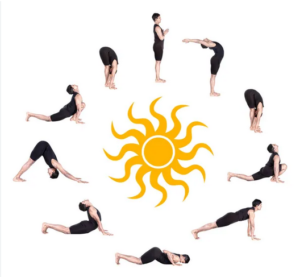Yoga Asanas
They are the specific postures of the body in yoga and sometimes they are named after some animal names. There are so many asanas but many times we see that the same asana is often named differently and performed differently in various modes by different schools in our country and in abroad. There are two types of schools of yoga asana. The classification is:
- The Dynamic type of Asanas which are used in hath yoga.
- The Relaxing type of Asana which is based on Maharishi Patanjali’s yoga sutras in his book YOG DARSHAN.
The practice of Hath Yoga believes in speed repetitions and maintenance of strength which means isometric exercises and sometimes with jerks. Its main target is to remove the lethargy and Tamas from the system repetitions and quick actions help in strengthening muscles and build stamina in the organs and systems of the body so it is very helpful in the growth process
The second type of system that is based on Maharishi Patanjali’s system is based on the maintenance of one posture for a longer duration with ease. Maharishi Patanjali’s system of Asanas deals with relaxation slow breathing and calming down of the mind when the normal growth of the physical plane is almost done, the channelization and conservation of energy are done very nicely in this system.
DYNAMIC ASANAS
These asanas include movements with speed and reputation it has a good effect on the muscular circulatory respiratory nervous and all the glandular systems of the body so it deals with Raja’s activity it is very good for children and is recommended for lethargic people It includes the Surya Namaskar, Sithila Yyaama or the combination of both one must follow Do’s and Don’ts that is Yamas restraints and Niyamas that is observations while practicing dynamic asanas.

RELAXING ASANAS
The main target is to develop inner awareness and reach a higher level of consciousness.
There should be effortless maintenance of the posture which results in strength and forbearance One who practices this system can have control over desires like cravings for food and there is deep relaxation and energy conservation which gives complete freshness of body and mind thus relaxing completely the mind and body. We can find our true nature by following this path and achieve the flexibility of spine positivity, health and overall personality improvement, and mental stability.
Right from the beginning man has a desire to be to remain fit and strong so there are different types of exercises which are performed by a human being. These types of exercises can be passive or active.
In the passive type of exercises, the beneficiary remains passive and we have massages and manipulation of muscles by others but in the case of active exercise a person gets involved completely in that exercise the main purpose of active exercises are to get strength speed dexterity, and endurance so the common feature of all these non- yogic types of exercises is that they involve speed jerks and repetitions they are the activities in which energy is expended and strengthening of muscles occurs. Any of these practices can be used for making good physical health and in sports.
HOW YOGA IS DIFFERENT FROM FROM OTHER PHYSICAL EXERCISES ?
There is always a difference between physical exercises and yoga. When we exercise there is an increase in breathing rate and heart rate and we consume more oxygen during exercise.
While performing yogic posture or asana, the oxygen consumption is reduced but in physical exercises the demand for oxygen increases.
When we perform asanas the respiratory rate falls and during exercise the respiratory rate increases, this is because physical exercises are done at a higher speed and the temperature of the body comes down when we perform yoga The metabolic rate drops whenever we perform asanas but increases during exercise.
BENEFITS OF ASANAS INCLUDE:
- Balancing of the endocrine system,
- Building a positive attitude towards life.
- Getting control over emotions.
- To bring physical and mental stability.
- The flexibility of the spine and reducing stiffness.
- Enhancement of the Parasympathetic Nervous System which is our rest and Digestive System.